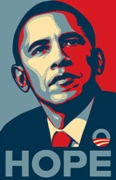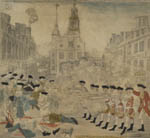The Obama “Hope” Poster Case — Mannie Garcia Weighs In

 (This is the 7th in a series of posts on Fairey v. Associated Press. See below for other posts in the series.)
(This is the 7th in a series of posts on Fairey v. Associated Press. See below for other posts in the series.)
[Update (7/23): The court granted Garcia’s motion to intervene, which was unopposed. AP’s and Fairey’s answers are due Aug. 14, fact discovery will continue until October, and the next status conference in the case will be Nov. 20, meaning we will most likely not get a summary judgement hearing until 2010.]
With the crunch at the end of the semester, my series on the Obama Hope poster case petered out unexpectedly. Among the events I noted silently to myself in the interim were Fairey’s answer to AP’s counterclaims and a trio of NPR interviews on the case with Shepard Fairey, Mannie Garcia, and law professor Greg Lastowka.
There’s nothing like a fresh filing to get one out of the doldrums, however. On Thursday, the other shoe in this case dropped when Mannie Garcia, the photographer who shot the Obama photograph at issue, filed a motion to intervene in the case as a defendant. (Quick, Civ Pro students: what rule?) Garcia’s proposed answer, counterclaims, and cross-claims assert that the photograph is copyrightable, that Garcia, not AP, is the copyright owner in the photograph, and that Fairey infringed his copyright. I’ll focus on two interesting aspects of the filing after the jump.

 I’ve just read Pam Samuelson’s recent article,
I’ve just read Pam Samuelson’s recent article,  Irene’s post
Irene’s post